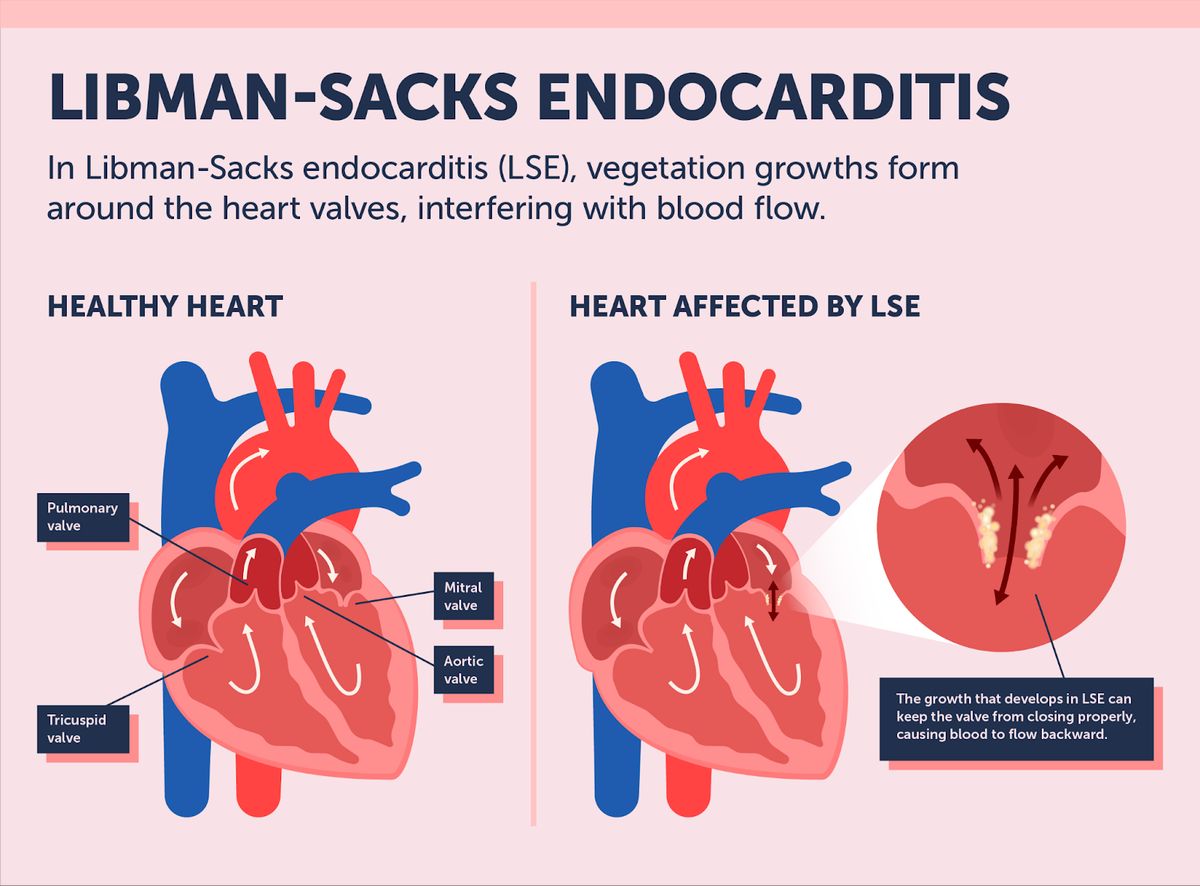
Libman–Sacks Disease might sound like a mouthful, but understanding it doesn't have to be complicated. This rare condition, often linked to systemic lupus erythematosus (SLE), affects the heart valves. Imagine tiny growths, or vegetations, forming on your heart valves, potentially leading to serious complications like valve dysfunction or heart failure. These vegetations are non-infectious, meaning they aren't caused by bacteria or viruses. Instead, they result from an autoimmune response. Knowing the symptoms, such as shortness of breath, chest pain, or fatigue, can be crucial for early detection. Early diagnosis and treatment can make a significant difference in managing this disease. Let's dive into 25 facts that will help you understand Libman–Sacks Disease better.
Key Takeaways:
- Libman–Sacks Disease primarily affects the heart valves and is linked to lupus. It can be asymptomatic and is diagnosed using echocardiography and blood tests. Treatment focuses on managing lupus and preventing complications.
- Complications of Libman–Sacks Disease include heart failure, embolism, infective endocarditis, valve dysfunction, and pulmonary hypertension. Research is ongoing to better understand and manage this rare condition.
What is Libman–Sacks Disease?
Libman–Sacks disease, also known as Libman–Sacks endocarditis, is a rare form of nonbacterial endocarditis. It primarily affects individuals with systemic lupus erythematosus (SLE). Let's dive into some fascinating facts about this condition.
-
Named After Discoverers: The disease is named after Emanuel Libman and Benjamin Sacks, who first described it in 1924.
-
Associated with Lupus: It is most commonly seen in patients with systemic lupus erythematosus (SLE), an autoimmune disease.
-
Nonbacterial: Unlike other forms of endocarditis, Libman–Sacks endocarditis is not caused by bacterial infection.
-
Heart Valve Involvement: It primarily affects the heart valves, especially the mitral and aortic valves.
-
Vegetations: The disease is characterized by the presence of small, sterile vegetations on the heart valves.
Symptoms and Diagnosis
Understanding the symptoms and how Libman–Sacks disease is diagnosed can help in early detection and management.
-
Often Asymptomatic: Many patients with Libman–Sacks endocarditis are asymptomatic, meaning they show no symptoms.
-
Possible Symptoms: When symptoms do occur, they may include fever, heart murmurs, and signs of heart failure.
-
Echocardiography: Diagnosis is often made using echocardiography, which can visualize the vegetations on the heart valves.
-
Blood Tests: Blood tests may show elevated levels of inflammatory markers, but no bacterial infection.
-
Biopsy: In rare cases, a biopsy of the heart valve may be performed to confirm the diagnosis.
Treatment and Management
Treatment options for Libman–Sacks disease focus on managing symptoms and preventing complications.
-
No Specific Treatment: There is no specific treatment for Libman–Sacks endocarditis itself.
-
Treating Underlying Lupus: Managing the underlying lupus with medications like corticosteroids and immunosuppressants can help.
-
Anticoagulants: Patients may be prescribed anticoagulants to prevent blood clots.
-
Surgery: In severe cases, surgery may be required to repair or replace damaged heart valves.
-
Regular Monitoring: Regular follow-up with a cardiologist is essential for managing the condition.
Complications
Libman–Sacks disease can lead to several complications if not properly managed.
-
Heart Failure: Damage to the heart valves can lead to heart failure.
-
Embolism: Vegetations can break off and cause embolism, leading to stroke or other complications.
-
Infective Endocarditis: Although the vegetations are sterile, they can become a site for bacterial infection, leading to infective endocarditis.
-
Valve Dysfunction: Chronic inflammation can cause valve dysfunction, necessitating surgical intervention.
-
Pulmonary Hypertension: In some cases, the disease can lead to pulmonary hypertension, increasing the pressure in the lungs' arteries.
Epidemiology and Research
Research into Libman–Sacks disease is ongoing, and understanding its epidemiology can provide insights into its management.
-
Rare Condition: Libman–Sacks endocarditis is a rare condition, affecting a small percentage of lupus patients.
-
Gender Predominance: It is more common in women, reflecting the higher prevalence of lupus in females.
-
Age of Onset: The disease can occur at any age but is most commonly diagnosed in young to middle-aged adults.
-
Genetic Factors: Research suggests that genetic factors may play a role in the development of Libman–Sacks endocarditis.
-
Ongoing Studies: Ongoing research aims to better understand the pathophysiology of the disease and develop targeted treatments.
Final Thoughts on Libman–Sacks Disease
Libman–Sacks Disease, a rare condition linked to systemic lupus erythematosus (SLE), affects the heart's valves. Understanding its symptoms, such as heart murmurs, shortness of breath, and fatigue, can lead to early diagnosis and better management. Regular check-ups and echocardiograms are crucial for those with SLE to monitor heart health. While there's no cure, treatments like anticoagulants and anti-inflammatory medications help manage symptoms and prevent complications. Staying informed and proactive about heart health can make a significant difference for those affected. Remember, knowledge is power when dealing with rare diseases. Keep learning, stay vigilant, and consult healthcare professionals regularly.
Frequently Asked Questions
Was this page helpful?
Our commitment to delivering trustworthy and engaging content is at the heart of what we do. Each fact on our site is contributed by real users like you, bringing a wealth of diverse insights and information. To ensure the highest standards of accuracy and reliability, our dedicated editors meticulously review each submission. This process guarantees that the facts we share are not only fascinating but also credible. Trust in our commitment to quality and authenticity as you explore and learn with us.
